
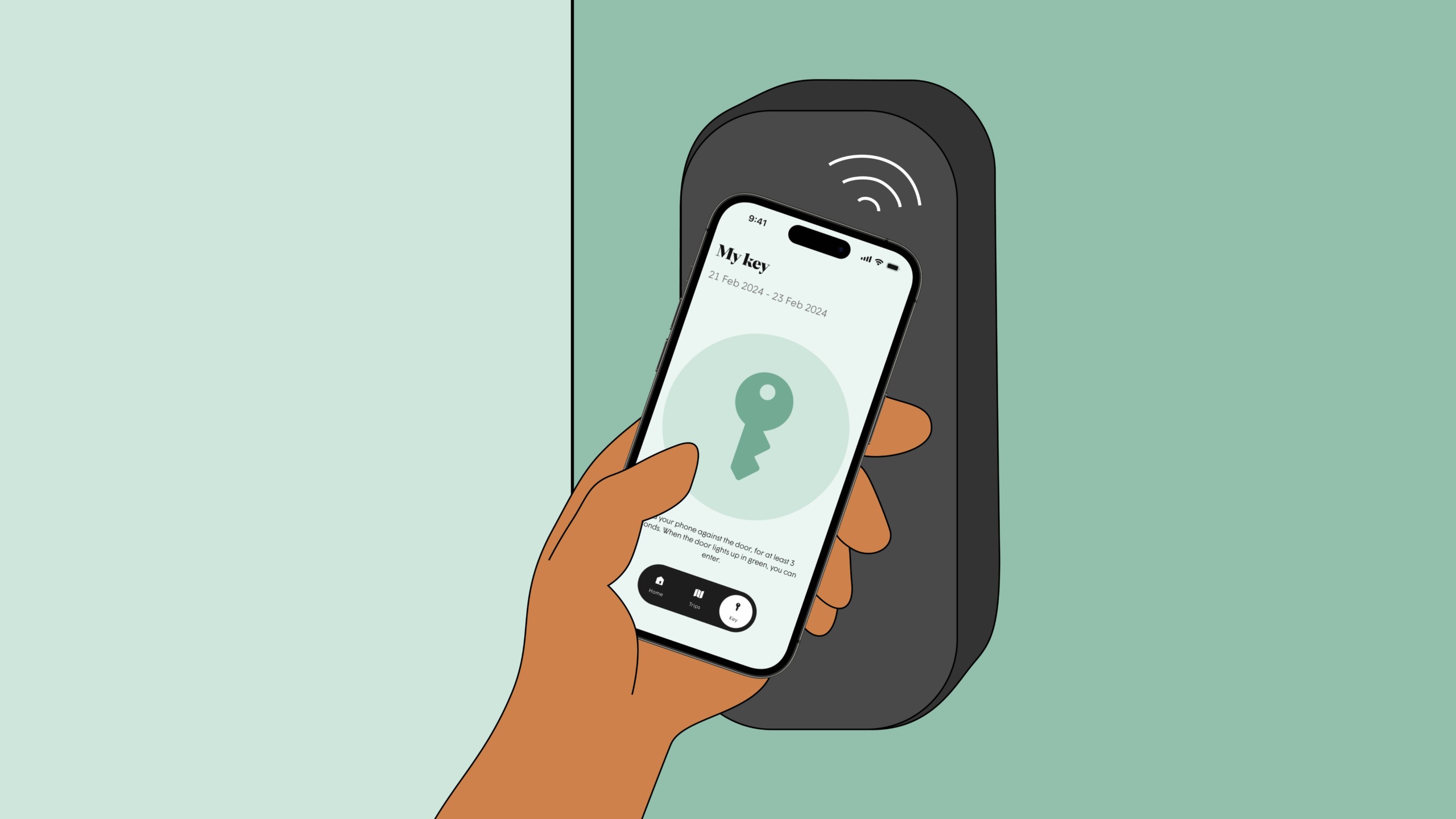
Enhancing customer focus in self-service hotel
In the rapidly evolving world of self-services, focusing on customer needs is crucial. For a client in the hospitality sector, we improved the customer journey and business positioning. The challenges faced, mainly through the self-service concept, were all centred around customer needs. We identified three critical issues: mismatched expectations, difficulties with digital key access, and substandard customer support. We proposed solutions to enhance customer satisfaction, including improved communication about the self-service concept, increased flexibility in the booking system, and a more effective customer service approach, introducing a chatbot and faster response times. These changes not only improved individual customer experiences but also enhanced business positioning and marketing.
Contribution
Digital Strategy, UX Research, Workshop Facilitation, UX Design, UI Design
Year
2023 – 2024
Client
Self-service hotel
Enhancing customer focus in self-service hotel
In the rapidly evolving world of self-services, focusing on customer needs is crucial. For a client in the hospitality sector, we improved the customer journey and business positioning. The challenges faced, mainly through the self-service concept, were all centred around customer needs. We identified three critical issues: mismatched expectations, difficulties with digital key access, and substandard customer support. We proposed solutions to enhance customer satisfaction, including improved communication about the self-service concept, increased flexibility in the booking system, and a more effective customer service approach, introducing a chatbot and faster response times. These changes not only improved individual customer experiences but also enhanced business positioning and marketing.
Contribution
Digital Strategy, UX Research, Workshop Facilitation, UX Design, UI Design
Year
2023 – 2024
Client
Self-service hotel
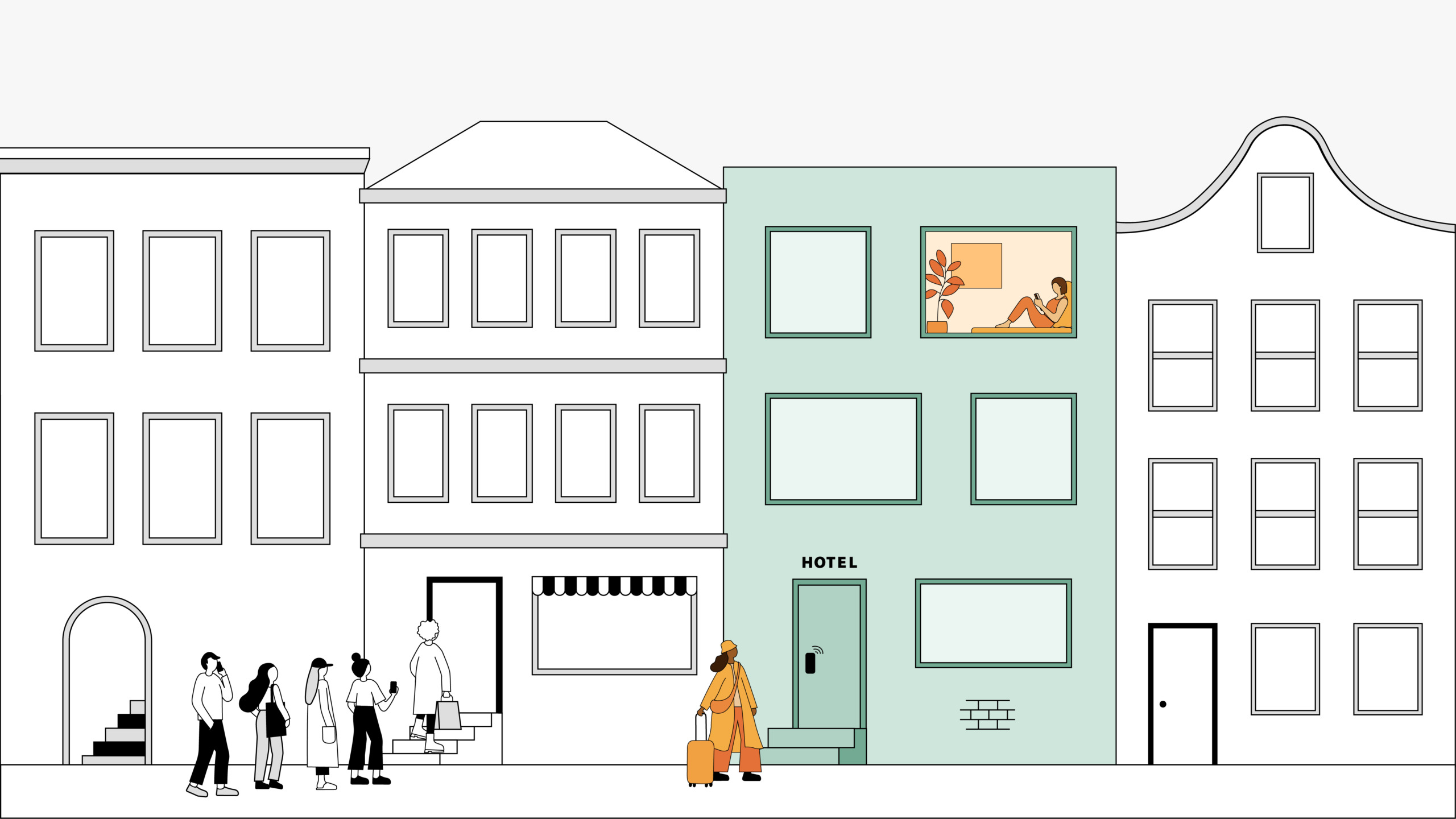
Challenge
Low Customer Satisfaction
The client approached us due to low reviews and customer satisfaction. Customers frequently experienced dissatisfaction as their expectations were not met, primarily due to insufficient communication about the self-service concept. Furthermore, many encountered difficulties accessing the digital key through a third-party application, particularly if incorrect phone numbers were provided during registration, highlighting the system’s inflexibility. Additionally, when support was needed, customers were often frustrated by slow response times and inefficient customer service, further compounding their dissatisfaction.
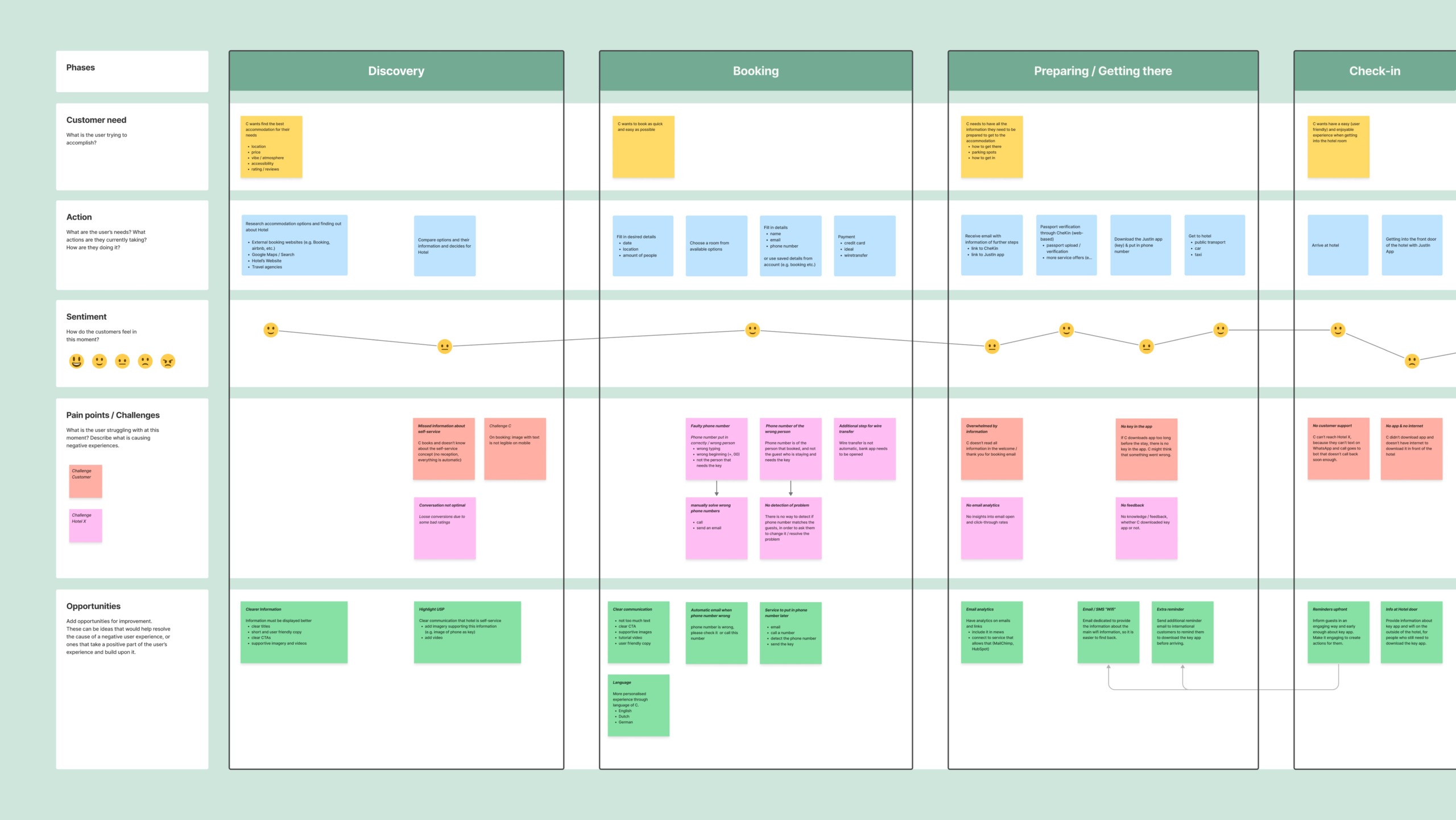
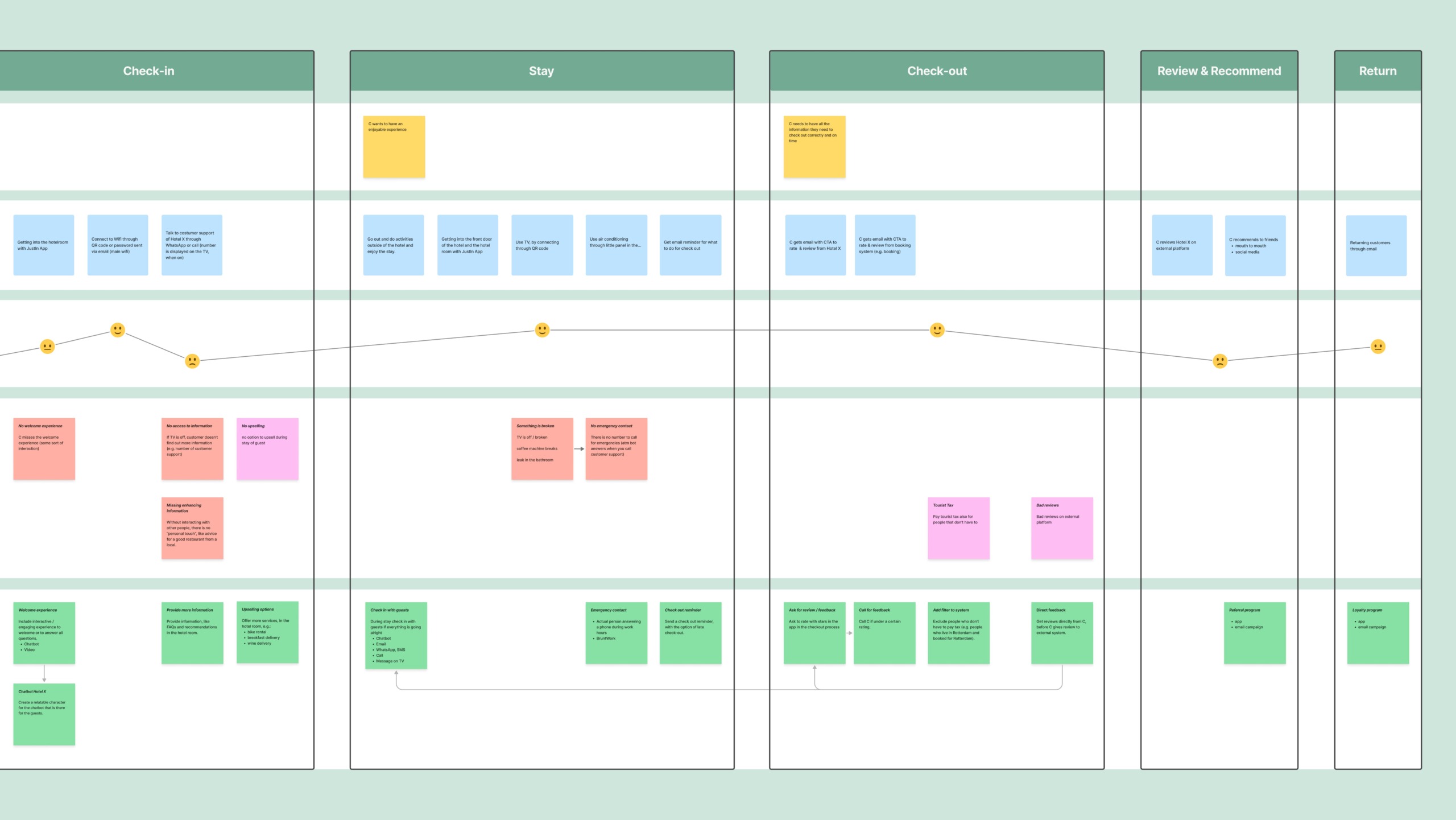
Approach
Identify Pain Points
The approach to this project was multifaceted, aimed at enhancing customer experience in the self-service hospitality sector. We began by mapping the customer journey to gain insights from both the client and customer perspectives. The initial challenge of “bad reviews” evolved into a more nuanced issue, where we identified multiple pain points, allowing for specific actionable opportunities. Next, we used an impact-effort matrix to prioritise these opportunities based on their potential benefits and required efforts. We created a strategic roadmap with defined short and long-term actions.
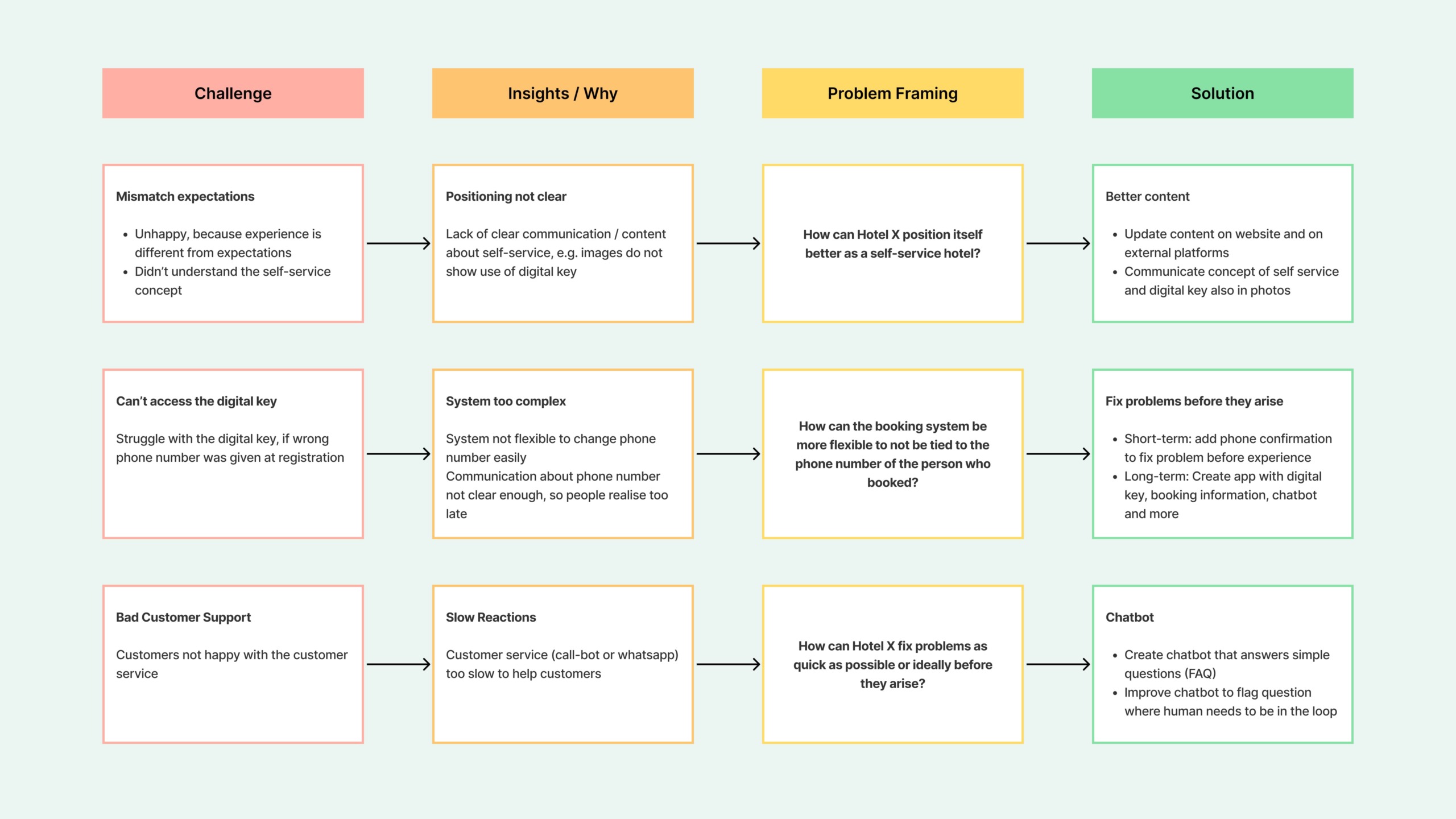
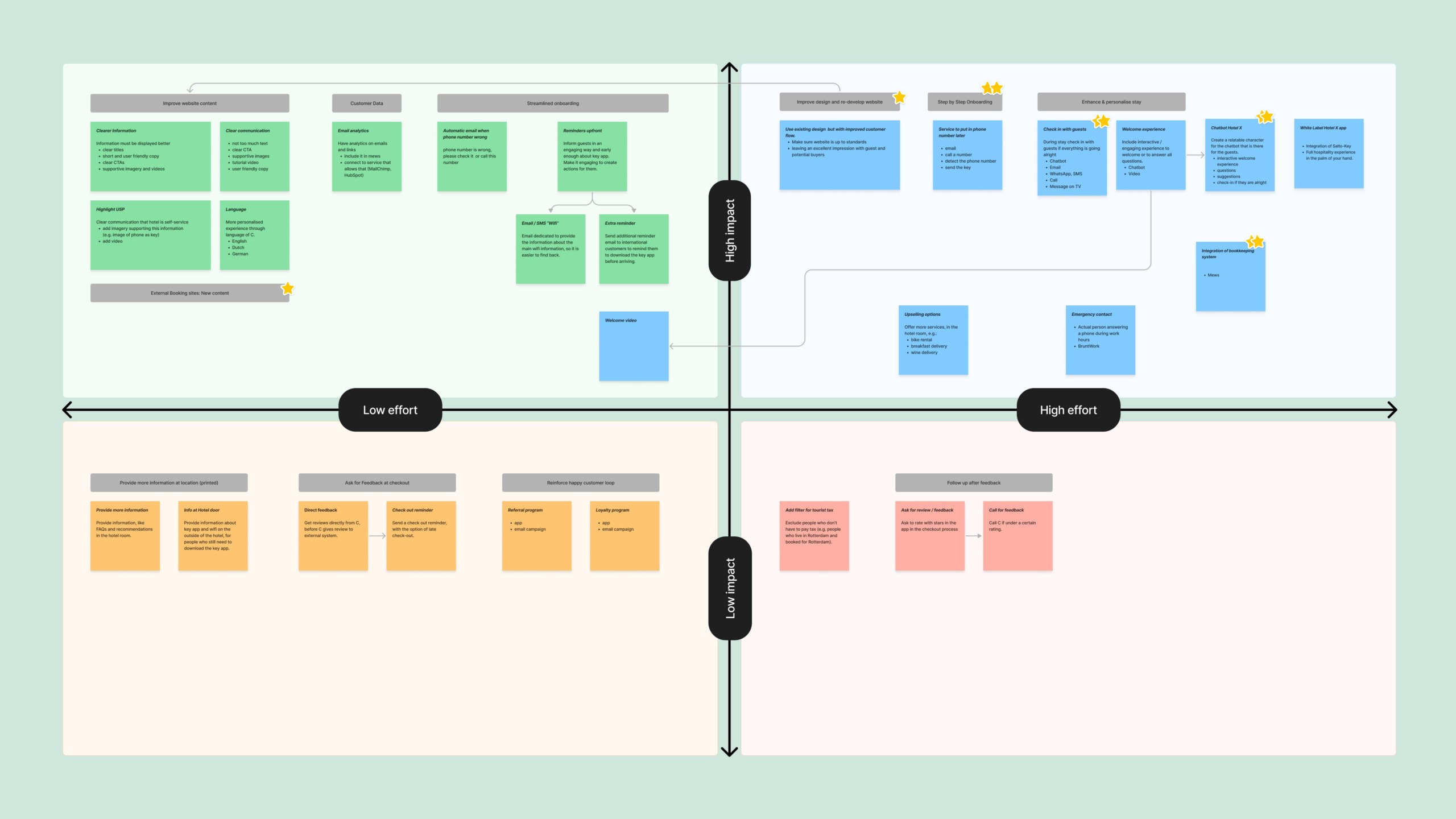
Solution
A roadmap with short and long-term actions
In the heart of this comprehensive transformation, we have analysed and addressed three core challenges:
Firstly, mismatched expectations often left customers disgruntled, as they not always understood that it was a self-service hotel. To combat this, we focused on clearer positioning and precise communication about the self-service concept.
Secondly, we mitigated the issues with digital key access, a frequent struggle for customers who had given incorrect phone numbers at registration. The key to solving this problem was simply making the system more flexible. We introduced an additional step in the customer journey to confirm the phone number, eliminating the problem before the experience even started. Our long-term solution included creating a phone application that integrates the digital key with a log-in that is no longer tied to the phone number.
Lastly, we focused on improving customer support. To address this, we created a chatbot that swiftly answers FAQs, freeing up human resources to handle more complex issues flagged by the chatbot. These improvements ensure a quick and efficient response at all times.
This strategic transformation, grounded in enhancing the customer experience, is leading the way in the self-service hospitality sector.
Design
Omni-channel experience
Our short-term roadmap included improving the website content to better communicate the self-service concept, updating the visual branding, and improving technical performance. For long-term improvements, we devised a roadmap that involved creating an app integrated with a digital key and chatbot. We also aimed to improve email communication and design to ensure a seamless and engaging user experience.
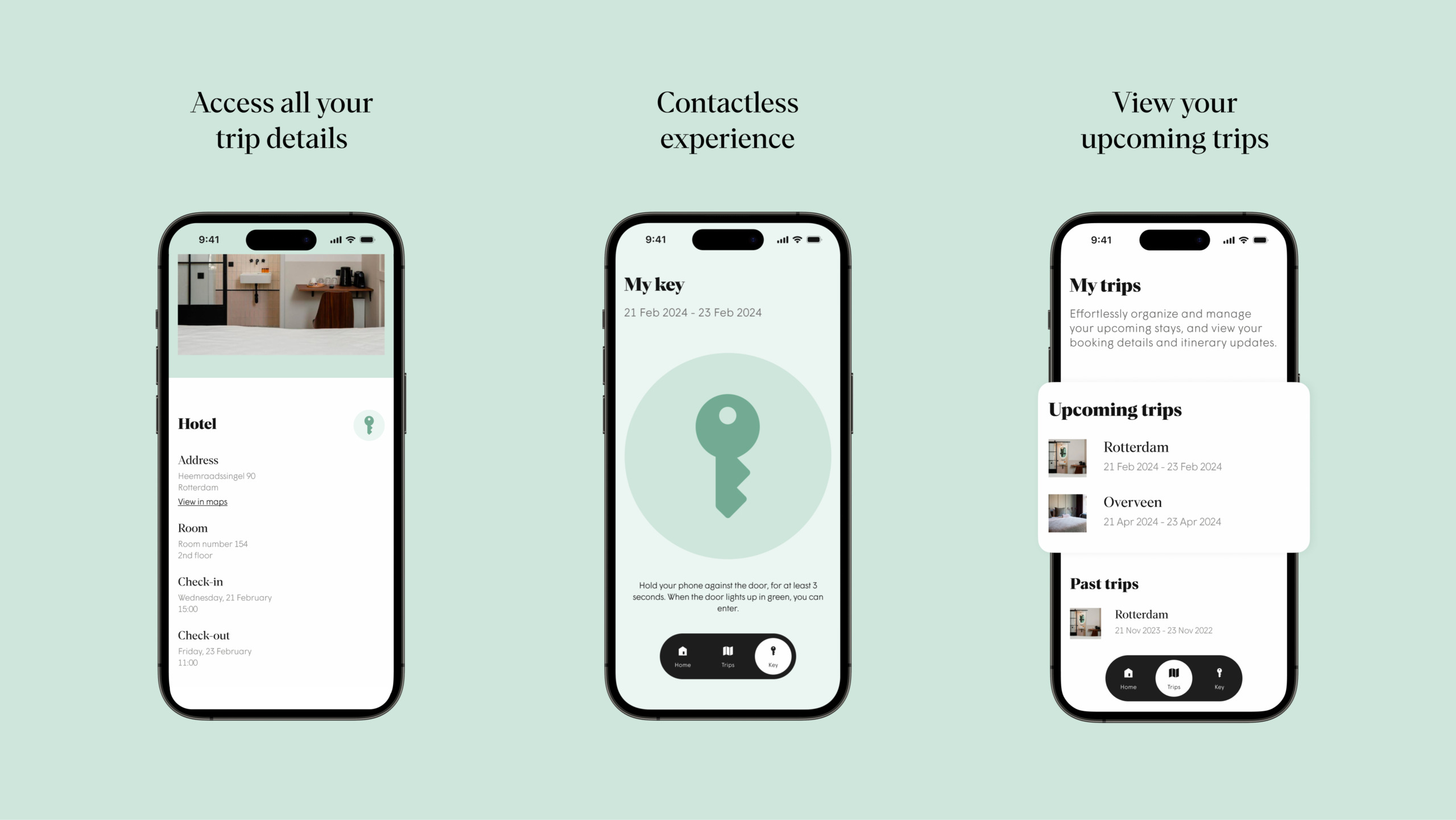
Impact
Enhanced customer experience and customer support
The potential impact of this project could be significant. The implementation of a chatbot will free up resources, allowing customer service to focus on more complex issues and improving the overall efficiency of the operation. Improving communication and implementing practical solutions, enhances the customer experience, leading to increased customer satisfaction and potentially higher ratings and reviews. This could result in more bookings and increased revenue.
These improvements will allow the business to grow and expand into more locations. The long-term impact could be a stronger brand identity and a leading position in the self-service hospitality sector.
2023 – 2024 | Studio Vi
